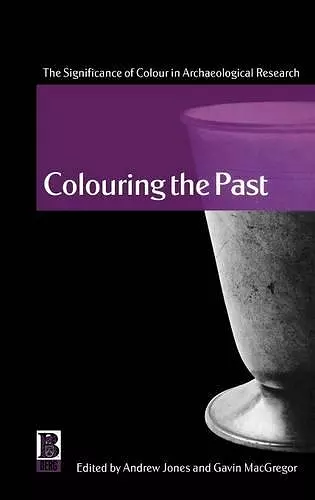Colouring the Past
The Significance of Colour in Archaeological Research
Andrew Jones editor Gavin MacGregor editor
Format:Hardback
Publisher:Bloomsbury Publishing PLC
Published:1st Jul '02
Currently unavailable, and unfortunately no date known when it will be back

Also available in paperback, 9781859735473 GBP17.99 (July, 2002)
This title explores the means by which colour-based cultural understandings are formed, and how they are used to sustain or alter social relations. From colour systems in the Mesolithic, to Aztec symbolism and the use of colour in Roman Pompeii, it paints a new picture of the past.Colour shapes our world in profound, if sometimes subtle, ways. It helps us to classify, form opinions, and make aesthetic and emotional judgements. Colour operates in every culture as a symbol, a metaphor, and as part of an aesthetic system. Yet archaeologists have traditionally subordinated the study of colour to the form and material value of the objects they find and thereby overlook its impact on conceptual systems throughout human history.This book explores the means by which colour-based cultural understandings are formed, and how they are used to sustain or alter social relations. From colour systems in the Mesolithic, to Mesoamerican symbolism and the use of colour in Roman Pompeii, this book paints a new picture of the past. Through their close observation of monuments and material culture, authors uncover the subtle role colour has played in the construction of past social identities and the expression of ancient beliefs. Providing an original contribution to our understanding of past worlds of meaning, this book will be essential reading for archaeologists, anthropologists and historians, as well as anyone with an interest in material culture, art and aesthetics.
'Until recently archaeologists were remarkably insensitive to the importance of colour in ancient societies. This book changes the situation. It offers a series of provocative and persuasive studies which will surely influence a new generation of research. It will help to stimulate a more imaginative approach to fieldwork and richerinterpretations of the past. All archaeologists should read it and learn from what it has to say.'Richard Bradley, Reading University
ISBN: 9781859735428
Dimensions: 234mm x 156mm x 17mm
Weight: unknown
276 pages